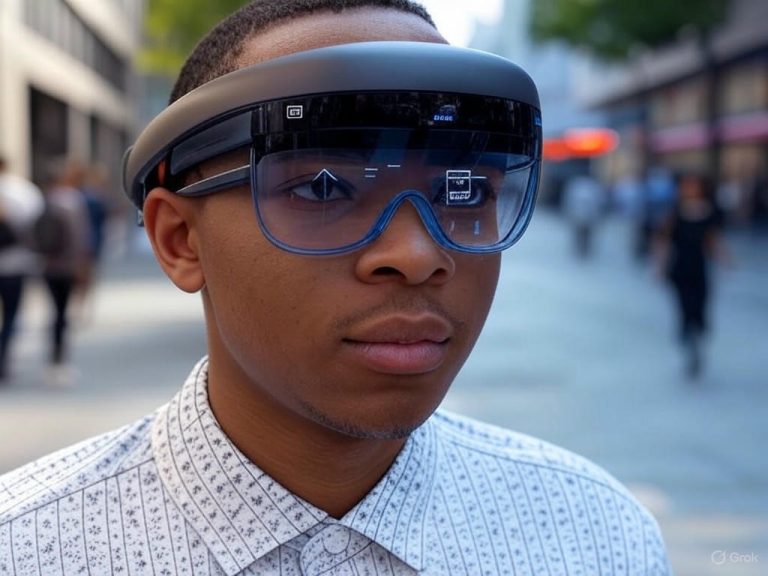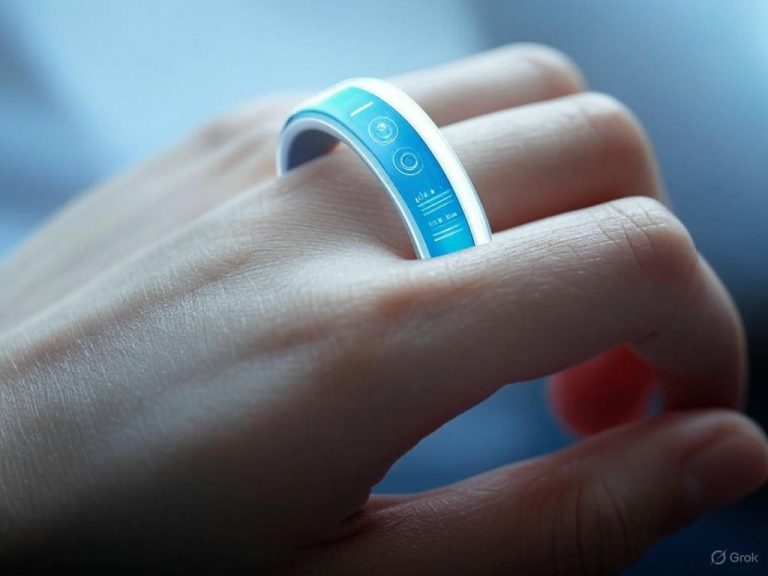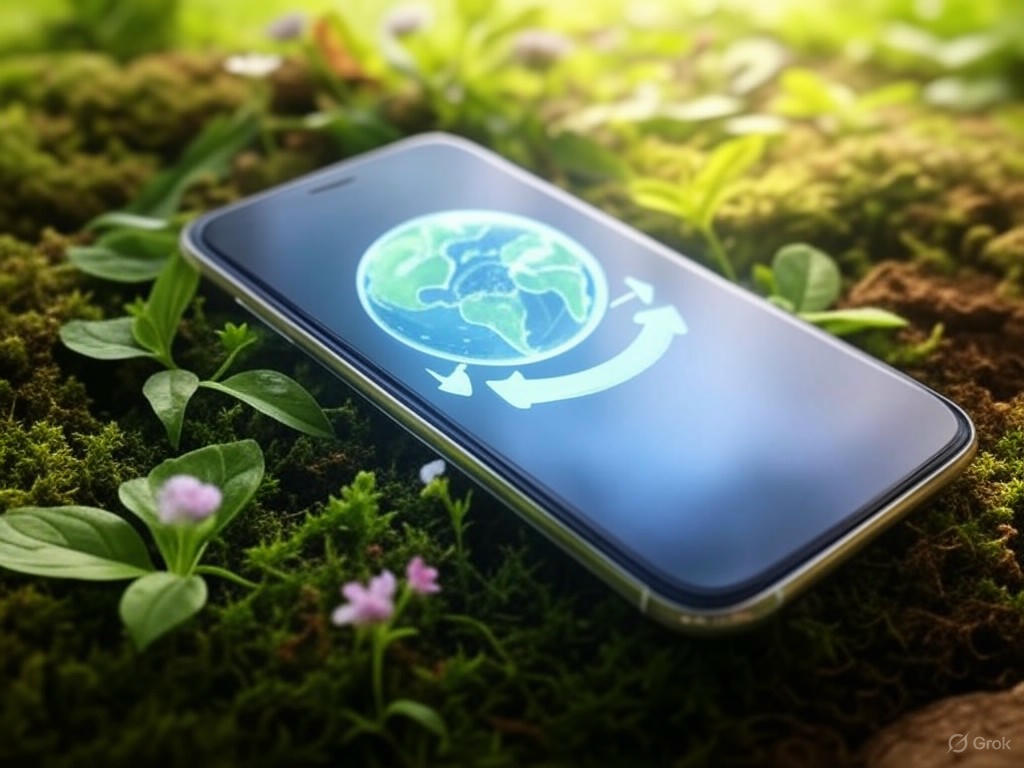
Eco-Friendly Smartphones 2025: Real Sustainability Tested
- Introduction: The Growing Imperative for Eco-Friendly Smartphones in 2025
- Introduction: The Growing Imperative for Eco-Friendly Smartphones in 2025
- The Environmental Impact of Smartphone Production and Disposal
- Defining Eco-Friendly Smartphones in 2025
- Market Dynamics: Consumer Demand and Regulatory Pressures
- Practical Takeaway
- Sustainability Benchmarks and Ethical Standards in Smartphone Manufacturing
- Sustainability Benchmarks and Ethical Standards in Smartphone Manufacturing
- Conflict-Free and Recycled Mineral Sourcing: The Core Challenge
- Carbon Footprint Accounting: Measuring What Matters
- Labor Rights Compliance and the Vital Role of Transparency
- Final Thoughts on Sustainability Benchmarks
- Technical Specifications and Innovations Driving Sustainability
- Technical Specifications and Innovations Driving Sustainability
- Use of Recycled and Fair-Trade Materials
- Modular Design and Repairability
- Energy Efficiency and Durability
- Extended Software Support
- Performance and Real-World User Experience of Leading Eco-Friendly Smartphones
- Performance and Real-World User Experience of Leading Eco-Friendly Smartphones
- Camera Capabilities: Balancing Specs and Real Use
- Battery Life and 5G Network Performance: Endurance Meets Connectivity
- Repairability and Component Replacement: Designed for Longevity
- Summary: Choosing the Right Sustainable Smartphone for Everyday Use
- Comparative Analysis: Eco-Friendly Smartphones Versus Conventional Flagships
- Comparative Analysis: Eco-Friendly Smartphones Versus Conventional Flagships
- Environmental Impact: Tangible Gains Amidst Challenges
- Reparability and Longevity: Eco Phones Lead, But Mainstream Brands Are Improving
- Performance, Price, and Ecosystem: Balancing Trade-Offs
- Summary: The State of Eco-Friendly Smartphones in 2025
- Practical Implications: Repairability, Recycling, and Consumer Responsibility
- Practical Implications: Repairability, Recycling, and Consumer Responsibility
- Right-to-Repair Policies: A Game-Changer for Sustainability
- Recycling and Trade-In Programs: What Works in 2025
- Consumer Responsibility: Maximizing Lifespan and Minimizing Waste
- The Bigger Picture: Challenges and Opportunities
- Future Trends and Challenges in Sustainable Smartphone Development
- Future Trends and Challenges in Sustainable Smartphone Development
- Biodegradable and Sustainable Materials: Progress and Limitations
- Circular Economy Models and Carbon Footprint Transparency
- Regulatory Landscape: A Double-Edged Sword
- Realistic Expectations and Areas Needing Further Progress
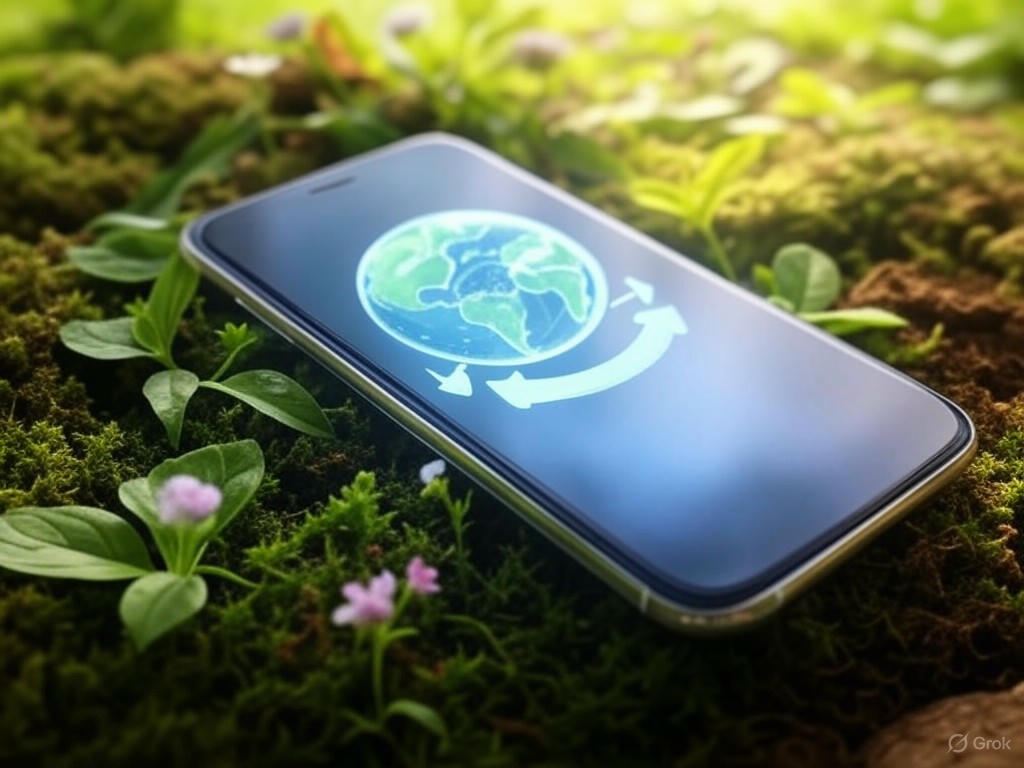
Introduction: The Growing Imperative for Eco-Friendly Smartphones in 2025
Introduction: The Growing Imperative for Eco-Friendly Smartphones in 2025
Smartphones have become indispensable in daily life, yet their environmental footprint remains substantial. By 2025, global electronic waste is projected to exceed 60 million metric tons, with smartphones contributing a significant portion. This mounting e-waste crisis threatens not only overflowing landfills but also environmental contamination from toxic chemicals leaching into soil and water, alongside the high carbon emissions associated with mining and manufacturing processes.
The Environmental Impact of Smartphone Production and Disposal
The manufacturing phase accounts for approximately 85% of a smartphone’s total carbon footprint, mainly due to metal extraction, shipping, and assembly. On average, a smartphone generates about 63 kilograms of CO₂ equivalent annually. For context, a user making just two minutes of calls daily contributes nearly 47 kilograms of carbon emissions per year.
Although smartphones are up to 80% recyclable—recovering valuable metals like gold, copper, cobalt, and tin—only a fraction of devices are properly recycled worldwide. In fact, less than one-third of e-waste is documented as adequately recycled. Much of this waste ends up in countries lacking proper infrastructure, causing significant environmental and health hazards. Additionally, incineration of e-waste releases toxic fumes, exacerbating global warming and respiratory issues.
Consumer behavior also influences this cycle. While the average smartphone lifespan has increased from roughly 2.7 years to over 3 years in many markets, the sheer volume of devices—estimated between 25 to 50 billion globally—drives relentless demand for new models. This perpetuates resource extraction and waste generation, underscoring the urgency for sustainable solutions.
Defining Eco-Friendly Smartphones in 2025
Eco-friendly smartphones are no longer niche products but essential market offerings in 2025. Leading manufacturers such as Apple and Samsung are setting ambitious sustainability goals. For instance, Apple plans to incorporate 100% recycled cobalt in all its batteries and recycled rare earth magnets by 2025. Samsung’s Galaxy S25 has earned recognition for using recycled gold and copper in key components.
Key attributes of eco-conscious smartphones include:
- Recyclability: Designs facilitating efficient material recovery to minimize waste.
- Sustainable Materials: Utilization of post-consumer recycled plastics, recycled rare earth elements, and responsibly sourced minerals.
- Ethical Supply Chains: Adherence to human rights and environmental standards in mineral extraction and manufacturing.
- Device Longevity: Modular and repairable designs that extend usable life. Fairphone, for example, offers smartphones lasting an average of 5.5 years—nearly double the industry norm—supported by long-term software updates.
Despite these advances, challenges remain. Recycled materials can sometimes compromise durability or aesthetics, and complex supply chains may increase costs. However, ongoing engineering innovations and growing consumer demand are progressively overcoming these hurdles.
Market Dynamics: Consumer Demand and Regulatory Pressures
The market momentum behind eco-friendly smartphones is strengthening rapidly. A GSMA report indicates that 70% of consumers are willing to pay a premium for environmentally friendly devices. The circular economy for mobile phones is anticipated to exceed $150 billion by 2027, fueled by repair, refurbishment, and recycling services that can reduce carbon emissions by up to 90% compared to manufacturing new devices.
Regulatory frameworks are also tightening. Starting June 2025, the European Union will enforce new ecodesign and energy labeling requirements for smartphones. These regulations mandate longer-lasting, more repairable devices with minimum durability standards and improved energy efficiency. Concurrently, the global Right to Repair movement is advocating for accessible repair manuals and spare parts to combat premature device replacement and waste.
Governments are further incentivizing circular business models and sustainable supply chains. Notably, Japan’s citizen CO₂ tracking pilot in Kawasaki exemplifies innovative policy efforts aimed at driving behavioral change and standardizing sustainability metrics.
Practical Takeaway
For both consumers and industry stakeholders, eco-friendly smartphones in 2025 represent more than compliance—they signify a fundamental shift in how devices are designed, used, and disposed of with clear environmental accountability.
The convergence of rising consumer willingness to invest in sustainability, stricter regulatory landscapes, and genuine technological progress is steering the smartphone market toward greener practices. Success will depend on balancing performance, aesthetics, and cost without compromising environmental integrity.
Brands that transparently measure their environmental footprints, incorporate recycled materials without sacrificing quality, and empower users to extend device life through repairability and sustained software support will lead this transformation.
In essence, the imperative is clear: ignoring the environmental costs of smartphones is no longer viable. As eco-friendly options become mainstream in 2025, sustainability will be a decisive factor in your next smartphone purchase.
| Aspect | Details |
|---|---|
| Projected Global E-Waste by 2025 | Over 60 million metric tons |
| Smartphone Carbon Footprint | Approximately 63 kg CO₂ equivalent annually |
| Manufacturing Impact | 85% of total carbon footprint (metal extraction, shipping, assembly) |
| Recyclability of Smartphones | Up to 80% recyclable (gold, copper, cobalt, tin recovery) |
| Recycling Rate | Less than one-third of e-waste properly recycled |
| Average Smartphone Lifespan | Increased from 2.7 years to over 3 years |
| Estimated Number of Smartphones Globally | Between 25 to 50 billion |
| Apple Sustainability Goals for 2025 | 100% recycled cobalt in batteries; recycled rare earth magnets |
| Samsung Galaxy S25 Highlights | Uses recycled gold and copper in key components |
| Key Attributes of Eco-Friendly Smartphones | Recyclability, sustainable materials, ethical supply chains, device longevity |
| Fairphone Longevity | Average 5.5 years with long-term software updates |
| Consumer Willingness to Pay Premium | 70% (GSMA report) |
| Circular Economy Value by 2027 | Expected to exceed $150 billion |
| Carbon Emissions Reduction by Circular Services | Up to 90% compared to new manufacturing |
| EU Regulations Starting June 2025 | Mandatory ecodesign, energy labeling, durability, repairability standards |
| Right to Repair Movement | Advocates for accessible repair manuals and spare parts |
| Notable Government Initiative | Japan’s citizen CO₂ tracking pilot in Kawasaki |
Sustainability Benchmarks and Ethical Standards in Smartphone Manufacturing
Sustainability Benchmarks and Ethical Standards in Smartphone Manufacturing
Evaluating sustainability in smartphone manufacturing reveals uneven but measurable progress, particularly in three critical pillars: conflict-free and recycled mineral sourcing, comprehensive carbon footprint accounting, and robust labor rights compliance. These pillars form the foundation for assessing whether a brand genuinely embraces sustainability or merely engages in greenwashing.
Conflict-Free and Recycled Mineral Sourcing: The Core Challenge
Smartphone electronics rely heavily on raw materials, especially conflict minerals such as tantalum, tin, tungsten, and gold (3TG). Many of these minerals originate from regions afflicted by armed conflict and human rights violations, notably the Democratic Republic of Congo (DRC). Conflict minerals have been linked to financing armed groups, with rebel factions reportedly earning upwards of $800,000 monthly from illicit mining activities in the DRC. This places a considerable ethical responsibility on manufacturers to ensure transparent and responsible sourcing.
The EU Conflict Minerals Regulation, effective since 2021, mandates due diligence from importers and smelters to sever the link between conflict and mineral exploitation. Companies are required to audit their upstream suppliers, with penalties for non-compliance. Standardized tools like the Conflict Minerals Reporting Template (CMRT) facilitate traceability, but the complexity of global supply chains continues to pose transparency challenges.
Smartphone brands exhibit significant variation in sourcing practices:
- Fairphone leads with a perfect 100/100 Ethical Consumer rating, reflecting its steadfast commitment to 100% post-consumer recycled plastics and rare earth elements.
- Samsung actively participates in initiatives such as the Responsible Minerals Initiative (RMI) and the European Partnership for Responsible Minerals (EPRM), emphasizing minerals sourced with respect for human rights and environmental stewardship.
- Apple faces allegations regarding conflict mineral use from the DRC, though it disputes these claims and highlights strict supplier directives.
- Brands like HONOR and TCL score zero on ethical mineral sourcing policies, revealing a significant gap in industry standards.
This disparity underscores the ongoing need for greater traceability and increased recycled content adoption across the sector.
Carbon Footprint Accounting: Measuring What Matters
The environmental impact of smartphones predominantly stems from carbon emissions associated with material extraction, semiconductor fabrication, and device assembly. On average, a smartphone generates about 63 kilograms of CO₂ equivalent annually, with approximately 80% of emissions arising during production.
Semiconductor manufacturing is the most carbon-intensive stage, accounting for up to 80% of a smartphone’s total emissions. This intensity is driven by energy-demanding fabrication, often reliant on non-renewable sources. Industry forecasts, such as those from TechInsights, predict rising emissions due to increased silicon demand fueled by advanced AI accelerators and high-performance chips.
Additional lifecycle assessments reveal that mining 10 to 15 kilograms of ore is required to extract metals for a single phone, highlighting substantial environmental repercussions. Recycling mitigates this impact, as up to 80% of smartphone materials—including precious metals like gold, copper, cobalt, and tin—are recyclable.
Fairphone exemplifies effective carbon footprint reduction by:
- Utilizing recycled materials extensively.
- Designing modular phones with repairability in mind.
- Extending device lifespan to an average of 5.5 years, nearly double the industry average of 2.7 years.
Carbon accounting frameworks such as Arbor and Greenly help companies quantify direct and indirect emissions, including the challenging Scope 3 emissions (upstream and downstream activities). Leading tech companies like Microsoft, Google, and Apple have adopted these tools, although expanding data center demands have led to recent emission increases.
Consumer-facing labels play a crucial role in verifying environmental claims:
- Carbon Trust certification offers independent validation of carbon footprint reductions.
- Eco Rating assesses the entire device lifecycle—from production through disposal—and encourages manufacturers to improve durability and use recycled materials.
These certifications empower consumers to make informed, sustainable purchasing decisions.
Labor Rights Compliance and the Vital Role of Transparency
Sustainability extends beyond environmental factors to encompass ethical labor practices throughout the supply chain. Unfortunately, labor rights abuses, including risks of modern slavery, remain pervasive in electronics manufacturing due to complex globalized production networks.
The 2025 Ethical Consumer analysis found only one smartphone brand, Fairphone, achieving full marks on workers’ rights. Alarmingly, 12 other evaluated brands scored zero, lacking clear policies or enforcement mechanisms. This gap highlights significant challenges in ensuring ethical labor conditions in the sector.
Regulatory standards and certifications provide frameworks for compliance:
- ISO 9001 supports quality management systems.
- SA8000 focuses on social accountability and ethical labor practices.
- The upcoming EU Green Claims Directive will prohibit unverified environmental claims, pressing brands to substantiate sustainability efforts via independent audits.
Transparent practices are increasingly indispensable. Companies must establish anonymous grievance channels to protect workers and ensure ethical treatment. Brands promoting transparency through publishing supply chain audits, releasing repair manuals, and supporting the right-to-repair movement receive higher sustainability marks.
For example:
- Fairphone earns a perfect 10/10 repairability score from iFixit due to its modular, repair-friendly design.
- In contrast, Apple scores an average of 2.5, reflecting restrictive repair policies that contribute to electronic waste.
Final Thoughts on Sustainability Benchmarks
Sustainability in smartphone manufacturing is a multifaceted and ongoing challenge. Industry leaders like Fairphone demonstrate that integrating conflict-free mineral sourcing, thorough carbon accounting, and strong labor rights into a verifiable strategy is achievable.
However, the broader smartphone industry still faces hurdles such as opaque supply chains, high carbon footprints, and insufficient labor protections. For consumers seeking ethical choices in 2025, it is critical to look beyond marketing rhetoric and prioritize:
- Brands with third-party sustainability certifications.
- Transparent supply chain disclosures.
- High repairability scores.
- Verified carbon reduction commitments.
Extending device lifespans through repair, reuse, or selecting refurbished models remains one of the most effective ways to minimize environmental and social impacts.
By aligning purchasing decisions with these benchmarks, consumers and stakeholders alike can drive the smartphone market toward a more sustainable and ethical future.
| Aspect | Fairphone | Samsung | Apple | HONOR | TCL |
|---|---|---|---|---|---|
| Conflict-Free & Recycled Mineral Sourcing | 100/100 Ethical Consumer rating; 100% post-consumer recycled plastics and rare earth elements | Participates in Responsible Minerals Initiative (RMI) and European Partnership for Responsible Minerals (EPRM) | Faces allegations on conflict minerals from DRC; disputes claims; enforces strict supplier directives | Score zero on ethical mineral sourcing policies | Score zero on ethical mineral sourcing policies |
| Carbon Footprint Reduction | Extensive use of recycled materials; modular design with repairability; average device lifespan 5.5 years | Not specified | Adopts carbon accounting frameworks like Arbor and Greenly; recent emissions increased due to data center demand | Not specified | Not specified |
| Labor Rights Compliance | Full marks in workers’ rights; transparent supply chain audits; perfect 10/10 iFixit repairability score | Not specified | Average 2.5 iFixit repairability score; restrictive repair policies | Score zero; no clear policies or enforcement | Score zero; no clear policies or enforcement |
Technical Specifications and Innovations Driving Sustainability

Technical Specifications and Innovations Driving Sustainability
When evaluating eco-friendly smartphones in 2025, the emphasis must be on tangible hardware and software features that genuinely enhance sustainability—not just marketing buzzwords. This section breaks down the key innovations that distinguish sustainable phones in this pivotal year.
Use of Recycled and Fair-Trade Materials
Leading the charge, Samsung and Fairphone integrate recycled and ethically sourced materials extensively in their flagship models. Samsung’s Galaxy S25 notably earned the 2025 ReMA Design for Recycling® Award, highlighting its commitment to circularity and environmental impact reduction. The Galaxy S25 uses post-consumer recycled (PCR) plastics sourced from diverse industrial partners, which reduces manufacturing energy consumption by roughly one-third compared to virgin plastics and decreases reliance on oil extraction.
Fairphone 5 pushes the envelope further by achieving over 70% recycled and fair-trade material content. Its chassis uses 100% recycled plastics, and it incorporates rare earth elements recycled at 100% in speakers and 90% in vibration motors. Fairphone’s comprehensive sustainability approach includes improving supply chain working conditions and partnering with small-scale recyclers. Designed to last, the Fairphone 5 offers a five-year warranty and guarantees software updates for at least eight years—far exceeding typical industry standards.
Motorola’s Razr 60 Ultra blends sustainability with premium design by incorporating FSC-certified real wood inlays and using 70% recycled content in its front camera bracket plastic. This demonstrates that high-end aesthetics and eco-conscious materials can coexist. These examples illustrate that recycled aluminum and plastics are not only viable but fast becoming standard components to reduce smartphones’ carbon footprints.
Modular Design and Repairability
Repairability is a cornerstone of sustainability, directly extending device lifespan and curbing e-waste and resource depletion. Fairphone remains the benchmark with its modular design, allowing users to replace critical components such as the battery, display, and cameras easily with minimal tools. iFixit consistently awards the Fairphone 5 a perfect 10/10 repairability score—still unmatched by most mainstream smartphones.
Other manufacturers are beginning to explore modularity. MOD’s debut at CES 2025 introduced a modular smartphone with interchangeable modules that transform the device into gaming consoles or productivity machines. Although still niche, this innovation points toward a future where phones evolve with user needs, reducing premature disposal.
European regulations effective mid-2025 will further accelerate this trend by mandating energy efficiency labels and stringent requirements for repairability, durability, and recyclability. Giants like Apple and Samsung must adapt swiftly or risk losing consumer favor as device longevity and repair options become key purchasing factors.
Energy Efficiency and Durability
At the heart of sustainable smartphones lies energy-efficient performance. The Fairphone 5 leverages Qualcomm’s QCM6490 chipset—a Snapdragon 778G-based system-on-chip optimized for IoT applications. Benchmark tests show it delivers solid mid-range performance while prioritizing power efficiency. While it may lag behind flagship processors in handling demanding apps, this tradeoff favors longer device lifespan and reduced energy consumption.
Display technology plays a significant role in energy savings. OLED panels remain widespread, with LG Display’s new Hybrid Tandem OLED technology providing up to 15% lower power consumption than conventional OLEDs. This efficiency gain translates to approximately 30 to 60 additional minutes of screen-on time per charge—small per use but impactful over a device’s lifetime. LTPO (Low-Temperature Polycrystalline Oxide) displays, combining LTPS and IGZO backplanes, are increasingly standard in mid-to-high-end phones, enabling dynamic refresh rate adjustments that conserve battery life.
Battery technology continues to evolve with sustainability in mind. The Fairphone 5 features a 4200 mAh removable lithium-ion battery supporting 30W wired charging, reaching 50% charge in about 20 minutes. Importantly, the removable design empowers users to replace batteries themselves, a critical factor in extending device usability.
Durability certifications also contribute to sustainability. The Fairphone 5 holds an IP55 rating for sweat and water resistance and passes military-grade drop tests, enhancing resilience in daily use. Motorola’s Razr 50 Ultra boasts an IP48 rating, surviving submersion in fresh water up to 1.5 meters for 30 minutes. Rugged models like the Oukitel WP30 Pro push durability further with IP68/IP69K and MIL-STD-810G certifications, although they sacrifice sleekness for robustness.
Extended Software Support
Sustainability extends beyond hardware—it encompasses software longevity. Fairphone leads with a commitment to at least five years of Android OS updates and eight years of security patches, a remarkable benchmark compared to the industry norm of two to three years. This extended support ensures devices remain secure and functional longer, delaying obsolescence driven by unsupported software.
Google’s Pixel line, while less repairable than Fairphone, promotes extended use through strong part availability and comprehensive repair guides. Apple’s iPhones continue to receive five to six years of software updates but lag behind Fairphone regarding repairability and recycled content transparency.
In summary, the most sustainable smartphones in 2025 strike a balance between extensive use of recycled and fair-trade materials, modular and repairable designs, energy-efficient components, and extended software support. Fairphone exemplifies this holistic approach with transparent supply chains, long-term software commitments, and durable hardware engineered to last. Samsung and Motorola also make meaningful progress through recycled material integration and robust durability certifications. While no device is perfect, these technical specifications and innovations form the foundation of truly eco-friendly smartphones that minimize environmental impact throughout their lifecycle.
| Feature | Fairphone 5 | Samsung Galaxy S25 | Motorola Razr 60 Ultra | Other Models |
|---|---|---|---|---|
| Recycled Material Content | Over 70% (100% recycled plastics in chassis; 100% recycled rare earth in speakers; 90% in vibration motors) | Post-consumer recycled plastics, reduces manufacturing energy by ~33% | 70% recycled content in front camera bracket plastic; FSC-certified wood inlays | Oukitel WP30 Pro: Not specified |
| Fair-Trade Materials | Yes, integrated in supply chain | Not specified | Not specified | Not specified |
| Modular Design & Repairability | Modular; 10/10 iFixit repairability score; user replaceable battery, display, cameras | No mention of modularity; must adapt to new EU regulations | No modularity mentioned | MOD modular smartphone with interchangeable modules (niche) |
| Energy Efficiency | Qualcomm QCM6490 chipset optimized for power efficiency; OLED display; 4200 mAh removable battery with 30W charging | Uses PCR plastics to reduce energy; OLED display technology advancement noted | No chipset details; durability focused | LG Hybrid Tandem OLED tech (15% power saving); LTPO displays common in mid-high end phones |
| Durability Certifications | IP55 sweat/water resistance; military-grade drop tests | Not specified | IP48 water resistance (1.5m for 30 min) | Oukitel WP30 Pro: IP68/IP69K and MIL-STD-810G rugged certifications |
| Software Support | 5 years Android OS updates; 8 years security patches | Not specified | Not specified | Google Pixel: strong part availability and repair guides; Apple iPhone: 5-6 years software updates |
Performance and Real-World User Experience of Leading Eco-Friendly Smartphones

Performance and Real-World User Experience of Leading Eco-Friendly Smartphones
When assessing eco-friendly smartphones in 2025, practicality remains paramount. Let’s examine how flagship sustainable models—the Fairphone 5, Teracube 2e, and Samsung’s Certified Re-Newed phones—perform in daily use. We focus on camera quality, battery endurance, 5G network speed, and repairability, combining objective metrics with user feedback to balance specs against lived experience.
Camera Capabilities: Balancing Specs and Real Use
The Fairphone 5 offers a promising triple 50 MP camera system equipped with Sony lenses. On paper, this suggests premium imaging potential. However, real-world evaluations reveal trade-offs. Users and experts report a noticeable shutter lag of about five seconds, which can hinder capturing spontaneous moments. The ultra-wide camera, in particular, underperforms—many users describe it as “unusable.” Colors tend toward oversaturation, and low-light photography shows limitations. Video call microphone quality also falls short of expectations. Thus, while the Fairphone 5 delivers acceptable photography for everyday snapshots, it is not ideal for enthusiasts seeking top-tier imaging.
In comparison, the Teracube 2e’s camera is its weakest feature. Its 13 MP primary shooter lacks autofocus, resulting in soft, low-detail photos even in good lighting. HDR mode is sluggish and ineffective, and night shots are nearly unusable. The ultra-wide camera produces even lower-quality images, limiting versatility. Considering its budget-friendly price under $200 and strong sustainability focus, these compromises may be acceptable for basic users, but it is not recommended for serious photography.
Samsung’s Certified Re-Newed phones, especially recent flagship models like the Galaxy S23 or S24 series, outperform both competitors in camera quality. These factory-refurbished devices retain cutting-edge hardware and software, delivering sharp, vibrant photos with advanced zoom and computational photography features. The refurbishment process includes genuine parts and updated software, providing flagship-level cameras with a reduced environmental footprint. For example, the Galaxy S23 Ultra is widely praised for its imaging capabilities, combining professional-grade quality with sustainability.
Battery Life and 5G Network Performance: Endurance Meets Connectivity
The Fairphone 5’s 4200 mAh battery offers decent endurance, though it does not lead the pack. DXOMARK battery testing ranks it in the lower half for overall performance. Under moderate daily use, it typically lasts about a day and a half, on par with mid-range smartphones but below flagship standards. Charging is efficient, supporting 30W wired charging with roughly 50% charge in 20 minutes. However, users report occasional unexpected reboots and software-induced battery drain, which can impact reliability.
Teracube 2e shines in battery longevity within its price segment. Its 4000 mAh removable battery, combined with a modest Helio A25 processor and a low-resolution 720p display, easily powers a full day of use. The replaceable battery design aligns well with sustainability and longevity goals. The major drawback is the absence of 5G support in 2025, a significant limitation for users needing fast mobile data speeds.
Samsung’s Certified Re-Newed phones deliver battery life and 5G performance comparable to brand-new devices. Refurbishment includes battery replacement and software updates, ensuring reliable day-long endurance and seamless 5G connectivity. Samsung’s trade-in and warranty programs further enhance user confidence in long-term use.
Repairability and Component Replacement: Designed for Longevity
Repairability is a key strength of the Fairphone 5. Its modular architecture allows users to replace up to 10 individual components easily, supported by detailed repair guides and reasonably priced spare parts. A five-year warranty complements this design, encouraging users to maintain and upgrade their devices rather than replace them. This approach significantly extends device lifespan and reduces e-waste, embodying core sustainability principles.
The Teracube 2e also prioritizes repairability, featuring a removable battery and replaceable components backed by a generous four-year warranty. The company actively promotes DIY repairs, supplying guides and selling spare parts directly to consumers. Although it runs on an outdated Android 10 OS, its straightforward hardware design simplifies basic repairs. However, software longevity remains a concern.
Samsung’s Certified Re-Newed phones are factory refurbished with 100% genuine Samsung parts, offering high reliability. Repairability for end-users varies by model but generally is less modular compared to Fairphone and Teracube. Authorized repair centers handle major component replacements, but DIY repairs are limited and can be costly. This trade-off provides users with flagship performance and warranty coverage while accepting less user-driven repair flexibility.
Summary: Choosing the Right Sustainable Smartphone for Everyday Use
-
Fairphone 5: Strikes a balance between ethical sourcing, repairability, and mid-range performance. Its camera and battery life are modest, but the modular design and five-year warranty make it ideal for users prioritizing longevity and repair-first ethics over cutting-edge specs.
-
Teracube 2e: A budget-friendly, highly repairable phone with a replaceable battery and four-year warranty. Its outdated camera and software, along with lack of 5G, limit its appeal to basic users focused on sustainability and affordability.
-
Samsung Certified Re-Newed phones: Deliver flagship-level performance, including superior cameras, 5G connectivity, and dependable battery life, with a lower environmental impact than new devices. Repairability is less accessible to end-users but supplemented by factory refurbishment and warranty support.
Your choice ultimately hinges on priorities: Fairphone 5 for a repair-first, ethical approach with reliable mid-range performance; Teracube 2e for budget-conscious sustainability; Samsung Certified Re-Newed for premium tech combined with eco-conscious refurbishment. While no option is perfect, each advances the sustainable smartphone movement in 2025, offering practical paths toward reducing environmental impact without sacrificing usability.
| Feature | Fairphone 5 | Teracube 2e | Samsung Certified Re-Newed Phones |
|---|---|---|---|
| Camera | Triple 50 MP Sony lenses; shutter lag (~5s); ultra-wide “unusable”; oversaturated colors; limited low-light; poor video call mic | 13 MP primary without autofocus; soft, low-detail photos; slow HDR; poor night shots; low-quality ultra-wide | Flagship models (Galaxy S23/S24); sharp, vibrant photos; advanced zoom & computational photography; professional-grade quality |
| Battery Life | 4200 mAh; ~1.5 days moderate use; 30W wired charging (50% in 20 min); occasional reboots and battery drain | 4000 mAh removable; full day use; low-res 720p display; no 5G support | Comparable to new devices; battery replaced during refurbishment; reliable day-long endurance; seamless 5G connectivity |
| 5G Network | Supported | Not supported | Supported with flagship-level performance |
| Repairability | Modular design; replace up to 10 components; detailed guides; reasonably priced parts; 5-year warranty | Removable battery; replaceable components; DIY repair guides; 4-year warranty; runs Android 10 | Factory refurbished with genuine parts; repairability varies; less modular; authorized repair centers; limited DIY repairs; warranty included |
| Price | Mid-range | Under $200 (budget-friendly) | Varies; refurbished flagship pricing |
| Software | Up-to-date | Outdated Android 10 | Updated software during refurbishment |
| Warranty | 5 years | 4 years | Warranty included (varies by model) |
| Target User | Users prioritizing repair-first ethics and longevity over cutting-edge specs | Basic users focused on sustainability and affordability | Users seeking premium performance with eco-conscious refurbishment |
Comparative Analysis: Eco-Friendly Smartphones Versus Conventional Flagships
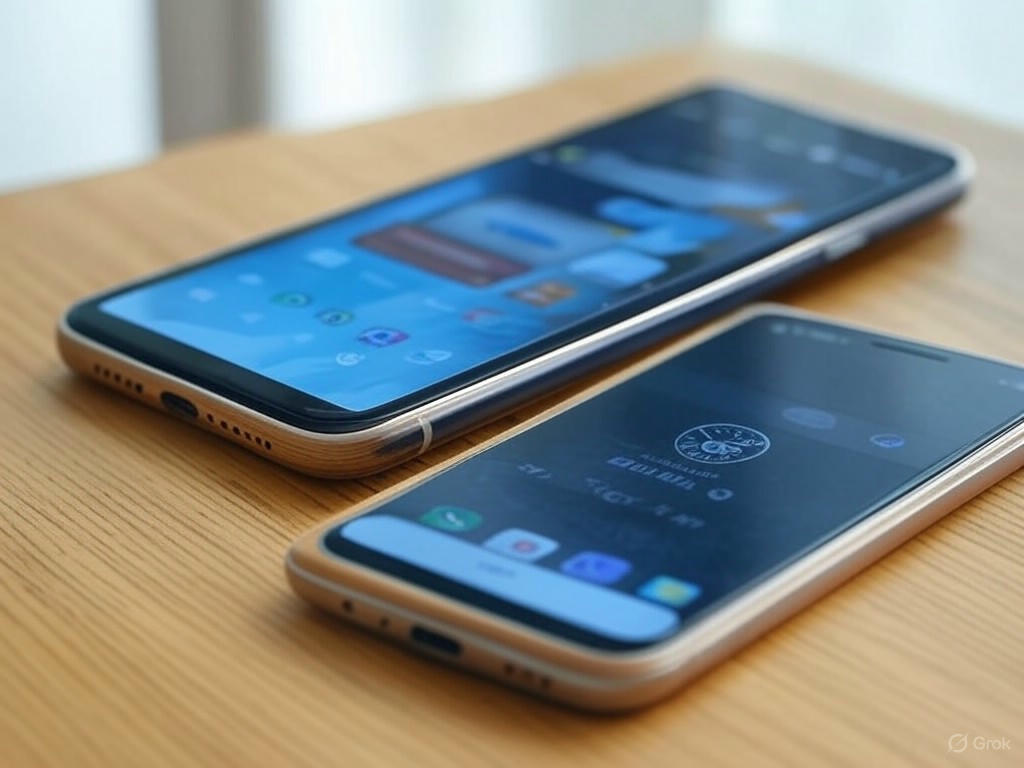
Comparative Analysis: Eco-Friendly Smartphones Versus Conventional Flagships
When comparing eco-friendly smartphones with mainstream flagships such as the Apple iPhone 15 series, Samsung Galaxy S25 Ultra, and Google Pixel 9 Pro, the environmental benefits of sustainable devices are evident but accompanied by nuanced trade-offs. This section benchmarks these devices across critical factors: environmental impact, reparability, longevity, and the usual considerations of performance, price, and software ecosystem.
Environmental Impact: Tangible Gains Amidst Challenges
Eco-conscious manufacturers are making significant strides in reducing the environmental footprint of smartphones. Fairphone exemplifies this with its modular design, prioritizing repairability and recyclability. It incorporates recycled metals and bioplastics, reducing dependence on virgin materials. Samsung’s Galaxy S25 Ultra registers a carbon footprint of 48.9 kg CO2e, considerably below the smartphone average of 63 kg CO2e, by employing eight recycled materials—including aluminum and cobalt—and integrating recycled gold wiring and at least 50% recycled cobalt in its batteries.
Apple has also advanced sustainability initiatives, reducing greenhouse gas emissions by over 60% since 2015 and targeting full carbon neutrality by 2030. The iPhone 15 series incorporates recycled materials and sustainable packaging, aligning with Apple’s comprehensive “Apple 2030” environmental commitment.
Despite these advancements, sustainable materials sometimes fall short in matching the durability and finish quality of conventional components, occasionally affecting device aesthetics or robustness. Additionally, supply chain complexities and sourcing recycled materials drive up production costs, resulting in higher prices for eco-friendly devices.
On packaging, all three major players—Apple, Samsung, and Google—have aggressively transitioned to plastic-free, recycled, and certified sustainable materials, setting new industry benchmarks for environmental responsibility.
Reparability and Longevity: Eco Phones Lead, But Mainstream Brands Are Improving
Repairability remains a critical factor extending device lifespan and reducing e-waste. Eco-friendly smartphones like Fairphone lead with modular components designed for user-friendly replacements of batteries, screens, and cameras, significantly extending usable life. Fairphone 5 scores a perfect 10/10 on iFixit’s repairability scale, a benchmark unmatched by most mainstream phones.
Among conventional flagships, the Apple iPhone 15 has improved its repairability score to a middling 7/10 but still relies heavily on glued components and software restrictions that limit independent repairs. Google’s Pixel 9 series tops repairability charts, thanks to accessible service manuals and genuine part availability, though glued displays and battery life issues in the Pixel 9 Pro remain concerns for longevity.
Samsung has made efforts with the Galaxy S25 Ultra by integrating recycled materials and adhering to responsible sourcing standards, but its repairability score is average due to complex internal designs and adhesive use.
Long-term software support also influences device longevity. Apple offers industry-leading update support, with 5 to 6 years of iOS updates. Samsung and Google have closed the gap, committing to extended Android OS and security updates—Samsung now promises multiple years of updates, and Google guarantees 5 years for Pixel devices. In contrast, eco-branded phones often have shorter update cycles, potentially limiting their usable lifespan.
Performance, Price, and Ecosystem: Balancing Trade-Offs
Eco-friendly smartphones generally prioritize sustainability over premium specifications. They use competent processors and sufficient RAM for everyday use but do not match flagship performance levels. For instance, the Pixel 9a, an affordable eco-conscious model priced at $499, features the Tensor G4 chip and solid AI capabilities but lacks telephoto lenses and rapid charging available in the Pixel 9 Pro.
Flagship devices like the iPhone 15 Pro and Galaxy S25 Ultra deliver cutting-edge hardware. Apple’s A17 Pro chip and Samsung’s Snapdragon 8 Gen 2 Elite for Galaxy provide top-tier speed and graphics. These devices also push forward with advanced features such as adaptive refresh rates, sophisticated camera systems, and integrated AI functionalities not yet available in eco phones.
Pricing reflects these differences. Flagships typically start above $800 to $1,000, while eco-friendly phones often command a premium for sustainability but may compromise on raw specs. The Pixel 9a stands out as a midrange exception, balancing cost and eco-conscious design but sacrificing some hardware capabilities.
Ecosystem integration is another key differentiator. Apple’s tightly controlled environment offers seamless synergy between hardware and software, extensive accessory ecosystems, and frequent feature updates. Samsung combines Google’s Android ecosystem with proprietary AI and software enhancements, and Google’s Pixel line provides a pure Android experience with early access to OS innovations. Eco-friendly brands, particularly smaller players, generally cannot match these mature ecosystems, which can affect user experience, app compatibility, and software support longevity.
Summary: The State of Eco-Friendly Smartphones in 2025
-
Environmental Impact: Sustainable smartphones significantly reduce carbon footprints and incorporate more recycled materials than conventional flagships but face challenges in material durability and cost.
-
Repairability and Longevity: Eco-friendly models lead in repair-friendly design and modularity, yet mainstream brands like Apple and Google are making notable improvements. Software update longevity remains stronger among mainstream devices.
-
Performance and Price: Flagship devices deliver superior performance and hardware innovation at higher price points. Eco phones prioritize sustainability with some midrange models striking a balance between affordability and eco-conscious features.
-
Ecosystem: Mainstream smartphones provide integrated, polished software experiences and accessory support unmatched by eco models.
For consumers prioritizing environmental impact and device repairability—and willing to accept some compromises in performance and ecosystem breadth—eco-friendly smartphones represent a compelling choice. Conversely, users seeking cutting-edge speed, advanced camera technology, and extended software support may still prefer mainstream flagships.
Encouragingly, the gap is narrowing. Upcoming EU regulations effective mid-2025 will mandate enhanced energy efficiency, repairability, and recyclability for all smartphones. This regulatory push will likely compel flagship manufacturers to integrate more sustainable materials and circular design principles, reducing existing trade-offs.
Choosing an eco-friendly smartphone today supports this sustainable future, though users should be mindful of current compromises. Balancing sustainability with performance and usability remains the primary challenge for this emerging segment, but progress is accelerating rapidly.
| Factor | Eco-Friendly Smartphones | Conventional Flagships (iPhone 15, Galaxy S25 Ultra, Pixel 9 Pro) |
|---|---|---|
| Environmental Impact | Use of recycled metals, bioplastics, modular design; lower carbon footprints (e.g., Galaxy S25 Ultra 48.9 kg CO2e vs. avg 63 kg); sustainable packaging; challenges with material durability and higher production costs | Incorporate recycled materials and sustainable packaging; Apple reduced greenhouse gas emissions by 60% since 2015; still higher carbon footprints on average; mature supply chains |
| Repairability | High repairability with modular components (Fairphone 5 scores 10/10 iFixit); user-friendly battery, screen, camera replacements | Improved repairability scores (iPhone 15 at 7/10, Pixel 9 best in category); reliance on glued components and software restrictions; Samsung average repairability due to design complexity |
| Longevity (Software Support) | Shorter update cycles; may limit usable lifespan | Industry-leading update support: Apple 5-6 years iOS updates, Google Pixel 5 years guaranteed, Samsung multiple years Android and security updates |
| Performance | Competent everyday use processors; midrange chips (e.g., Pixel 9a with Tensor G4); limited advanced features like telephoto lenses or rapid charging | Cutting-edge hardware: Apple A17 Pro, Snapdragon 8 Gen 2 Elite; advanced camera systems, adaptive refresh rates, integrated AI |
| Price | Often premium pricing for sustainability; some midrange exceptions (Pixel 9a at $499) | Typically $800-$1,000+ for flagship models |
| Ecosystem | Limited ecosystem integration; smaller brands with fewer accessories and software support | Strong ecosystem synergy: Apple’s integrated hardware/software, Samsung’s Android with proprietary enhancements, Google’s pure Android with early updates |
Practical Implications: Repairability, Recycling, and Consumer Responsibility
Practical Implications: Repairability, Recycling, and Consumer Responsibility
Smartphones are more than just gadgets—they are significant contributors to the global electronic waste crisis. By 2025, the conversation is shifting from “buy new” to “repair, reuse, and recycle.” This shift is critical: in 2022 alone, over 62 million metric tons of e-waste were generated worldwide, yet less than 20% was properly recycled. Understanding the practical implications around repairability, recycling programs, and consumer responsibility is essential to extend device lifespans and reduce environmental impact.
Right-to-Repair Policies: A Game-Changer for Sustainability
The right-to-repair movement has reached a pivotal milestone. As of 2025, all 50 U.S. states have enacted some form of right-to-repair legislation, with states like California, Minnesota, New York, Oregon, and Colorado leading with stringent consumer electronics repair laws. These laws require manufacturers to provide:
- Access to detailed repair manuals
- Availability of spare parts for extended periods
- Authorization for independent repair shops to service devices
Previously, many manufacturers restricted access to parts and repair documentation, steering consumers toward costly repairs or premature replacement. Now, laws banning “parts pairing”—where replacement parts are software-locked to specific devices—enable independent shops to perform legitimate repairs without manufacturer-imposed barriers.
For example, Apple historically opposed these regulations, but new laws in states such as New York, Minnesota, and California mandate compliance, closing loopholes that fostered a culture of digital disposability. This regulatory shift is expected to significantly reduce e-waste by making repairs more accessible, affordable, and safer.
From a consumer standpoint, you can now expect:
- A growing number of DIY repair manuals available online
- Easier access to genuine or high-quality compatible parts
- Independent repair shops equipped with AI-powered diagnostic tools offering same-day service, even for complex devices like foldables
These developments translate into fewer smartphones prematurely discarded and more opportunities to keep devices operational for longer.
Recycling and Trade-In Programs: What Works in 2025
Recycling old smartphones is no longer an afterthought. Leading brands and third-party services have expanded initiatives to responsibly recycle and refurbish devices, recovering valuable materials such as gold, copper, and cobalt, while safely disposing of toxic components like lead and mercury.
Key programs include:
- Samsung Trade-In: Offers credits up to $630 for qualifying devices, including incentives to switch to the Galaxy S25 Ultra—Samsung’s flagship phone recognized with the 2025 Design for Recycling® Award for its extensive use of recycled cobalt and other materials.
- Apple Trade-In: Accepts devices across multiple brands, not limited to Apple hardware, streamlining recycling and refurbishment efforts.
- Back Market: Provides a convenient, no-cost way to trade in old tech for cash, supported by professional refurbishment services that prepare devices for resale.
- Call2Recycle: A nationwide battery recycling initiative addressing the critical issue that less than 5% of lithium-ion batteries are recycled globally.
Consumers should follow best practices such as:
- Participating in local e-waste collection events, which many cities hold monthly
- Utilizing certified recyclers who adhere to environmental compliance standards to prevent hazardous waste contamination
- Avoiding disposal of devices with swollen or damaged batteries in regular trash due to fire and chemical risks
Businesses also play a vital role by hosting device drop-off drives and partnering with reputable recyclers to reduce corporate e-waste and enhance sustainability credentials.
Consumer Responsibility: Maximizing Lifespan and Minimizing Waste
The greenest smartphone is the one you already own. Despite growing awareness, the average replacement cycle remains between 12 and 16 months in many countries—much shorter than necessary. Extending your smartphone’s lifespan to 3–5 years or more is both feasible and impactful, benefiting your wallet and the planet.
Here are actionable strategies based on extensive device testing and industry insights:
- Handle with care: Invest in quality cases and tempered glass screen protectors to prevent physical damage that often leads to expensive repairs or replacement.
- Manage battery health: Avoid exposing your phone to extreme temperatures and practice healthy charging habits. Regularly monitor battery health—iOS users can check this via Settings > Battery Health, while Android users may need trusted third-party apps.
- Prompt repairs: Address issues such as cracked screens, water damage, or battery degradation early through certified or independent repair services. The expanded availability of independent repair shops makes this more accessible than ever.
- Keep software updated: Install OS updates promptly to receive security patches and performance optimizations that prolong device usability.
- Resist unnecessary upgrades: Avoid upgrading solely for new features if your current phone still meets your daily needs, reducing demand for new devices and associated environmental costs.
Beyond individual actions, spreading awareness within your community and actively participating in local e-waste initiatives helps normalize sustainable consumption patterns.
The Bigger Picture: Challenges and Opportunities
Despite progress, challenges remain. Tariffs on imported parts can increase repair costs and delay the availability of essential components. Supporting local repair businesses helps mitigate these issues while sustaining the repair ecosystem.
Technological innovations are also shaping the landscape. AI-powered diagnostics and modular component designs are making repairs more user-friendly and efficient. However, the industry must continue advocating for transparency and accessibility—repair manuals, parts, and tools should never be locked behind corporate interests.
Bottom line: Repairability and responsible recycling are no longer optional ideals—they are becoming industry standards supported by legislation and brand programs. As a consumer, embracing repair culture, leveraging trade-in and recycling services, and adopting mindful usage habits are your best strategies to reduce e-waste while maximizing value from your smartphone investment. The technology and policies are in place; the question now is whether we choose sustainability.
| Category | Details |
|---|---|
| Right-to-Repair Policies | All 50 U.S. states enacted right-to-repair laws by 2025; mandates include access to repair manuals, availability of spare parts, authorization for independent repair shops; bans parts pairing; examples include laws in California, Minnesota, New York, Oregon, Colorado. |
| Consumer Benefits | Access to DIY repair manuals, easier access to genuine or compatible parts, independent repair shops with AI-powered diagnostics, same-day service for complex devices like foldables. |
| Recycling & Trade-In Programs | Samsung Trade-In (credits up to $630, Galaxy S25 Ultra award-winning for recycled materials); Apple Trade-In (multi-brand device acceptance); Back Market (cash trade-in with refurbishment); Call2Recycle (battery recycling initiative). |
| Consumer Recycling Best Practices | Participate in local e-waste collection events, use certified recyclers, avoid trash disposal of damaged batteries, support device drop-off drives. |
| Consumer Responsibility Strategies | Handle devices with care (cases, screen protectors), manage battery health, prompt repairs via certified or independent shops, keep software updated, resist unnecessary upgrades. |
| Challenges | Tariffs on imported parts raising repair costs and delays; need to support local repair businesses. |
| Technological Innovations | AI-powered diagnostics, modular component designs improving repairability and efficiency; advocacy for transparency and accessibility of repair tools. |
Future Trends and Challenges in Sustainable Smartphone Development
Future Trends and Challenges in Sustainable Smartphone Development
Sustainable smartphone development in 2025 stands at a pivotal intersection of innovative breakthroughs and significant challenges. While advances in biodegradable materials and circular economy business models are gaining momentum, regulatory changes and technological bottlenecks continue to test the industry’s capacity to scale eco-friendly solutions effectively.
Biodegradable and Sustainable Materials: Progress and Limitations
Emerging materials designed to minimize environmental impact are making promising strides, though they remain imperfect. For instance, Pela has popularized biodegradable composites such as Flaxstic—made from flax straw waste combined with plant-based biopolymers—which reduce carbon emissions by approximately 30% and water usage by 34% compared to conventional plastics. These materials fully decompose within two years under commercial composting conditions, a marked improvement over traditional phone cases that can persist for centuries.
However, durability remains a key challenge. Many biodegradable alternatives cannot yet match the toughness or aesthetic appeal of plastics or metals. For example, while Urban Armor Gear offers phone cases with military-grade drop protection, their biodegradable counterparts often lag in impact resistance. This trade-off between sustainability and performance poses a practical concern for consumers who depend on their smartphones daily.
On the manufacturing front, the integration of recycled metals and plastics into smartphone components is becoming more widespread, reducing reliance on virgin resources. Fairphone exemplifies this approach with its modular design, enabling repairs and upgrades that significantly extend device lifespans. Still, these eco-conscious designs often incur higher production costs and introduce supply chain complexities that slow broader adoption.
Battery technology remains a critical sustainability bottleneck. Innovations like cobalt-free lithium-ion batteries and silicon anode designs aim to reduce the environmental and human costs of mining while enhancing energy density. A notable breakthrough from China involves a glycine-based recycling method capable of recovering 99.99% of lithium from spent batteries within 15 minutes. Despite these advances, most next-generation batteries are still in research and development stages, with widespread commercial deployment unlikely before the decade’s end.
Circular Economy Models and Carbon Footprint Transparency
The smartphone industry is increasingly embracing circular economy principles, with resale, rental, and refurbishment becoming mainstream strategies to reduce environmental impact. Studies suggest that if 80% of consumers in markets like Germany opt for used or rented phones, annual CO2 emissions could decrease by up to 20%, while device lifespans could increase by more than 30%. This approach leverages consumer behavior and infrastructure improvements alongside material innovations.
Apple’s integrated platform architecture provides it with a distinct advantage in circular economy initiatives compared to the fragmented Android ecosystem. Its standardized design and centralized control streamline repair and recycling programs, enabling scalable sustainability efforts. Meanwhile, manufacturers and operators globally are investing in trade-in and upgrade programs to prolong device use, thereby reducing e-waste.
Transparency in carbon accounting is gaining traction as well. Standards like the Partnership for Carbon Accounting Financials (PCAF) and tools such as Assurant Carbon IQ empower companies to measure scope 3 emissions—the indirect emissions from supply chains and product lifecycles, which are notoriously difficult to quantify. Accurate carbon reporting is essential not only for regulatory compliance but also for meeting stakeholder expectations and targeting emission reductions effectively.
Regulatory Landscape: A Double-Edged Sword
The European Union’s Ecodesign for Sustainable Products Regulation (ESPR), effective since mid-2024, marks a significant shift in sustainability requirements for smartphones. It mandates minimum standards for durability, repairability, recyclability, and extended software support, compelling manufacturers to adopt holistic design approaches. Early adopters can establish themselves as sustainability leaders and differentiate their products in a competitive market.
However, regulatory environments remain inconsistent worldwide. While the EU tightens standards, the United States presents a mixed picture. Federal clean energy initiatives face political hurdles, with some incentives paused or under threat, which could impede progress in sustainable manufacturing and cleaner energy sourcing.
Implementing circular and sustainable practices also presents conflicts with existing supply chain structures and cost models. The semiconductor and electronics industries are projected to see double-digit annual growth in energy and water usage through 2035, increasing pressure to innovate manufacturing processes that maintain sustainability gains without compromising yield or quality.
Realistic Expectations and Areas Needing Further Progress
Despite encouraging progress, sustainable smartphones in 2025 are not a comprehensive solution. Several challenges must be addressed to accelerate impact:
- Material Innovation vs. Performance: Biodegradable and recycled materials must bridge the gap in durability and aesthetic quality to achieve widespread consumer acceptance.
- Battery Sustainability: Commercialization of next-generation battery chemistries and advanced recycling techniques needs to accelerate to reduce the environmental footprint of energy storage.
- Scaling Circular Economy: Global expansion of infrastructure for device refurbishment, resale, and rental is essential, supported by consumer education and effective incentives.
- Regulatory Harmonization: Consistent global standards and enforcement mechanisms are needed to avoid a complex patchwork of rules that hinder compliance and innovation.
- Supply Chain Transparency: Robust carbon accounting and reporting practices must become industry standard to identify emissions hotspots and guide mitigation efforts.
For consumers and businesses aiming to support sustainable smartphones, the focus should be on extending device lifespans through repair and reuse, selecting brands with transparent carbon reporting, and staying informed on evolving regulatory landscapes. The industry’s measurable progress is promising, but the journey toward fully sustainable smartphones remains incremental, requiring persistent commitment from manufacturers, regulators, and users alike.
| Aspect | Trends/Initiatives | Challenges | Examples / Notes |
|---|---|---|---|
| Biodegradable Materials | Use of materials like Flaxstic (flax straw + biopolymers) reducing carbon emissions by ~30% and water usage by 34%; full decomposition in 2 years under commercial composting | Durability and impact resistance inferior to plastics/metals; consumer concerns over toughness and aesthetics | Pela (Flaxstic), biodegradable phone cases lag behind Urban Armor Gear in drop protection |
| Recycled Components | Integration of recycled metals and plastics to reduce virgin resource use; modular designs enabling repairs and upgrades | Higher production costs; supply chain complexities limit scale | Fairphone modular design extends device lifespan |
| Battery Technology | Development of cobalt-free lithium-ion and silicon anode batteries; advanced recycling methods recovering 99.99% lithium in 15 minutes | Most innovations remain in R&D; commercial deployment unlikely before decade’s end | China’s glycine-based lithium recycling breakthrough |
| Circular Economy Models | Resale, rental, refurbishment mainstream; increased device lifespan and reduced emissions | Requires consumer behavior change and improved infrastructure | 80% used/rented phones in Germany could cut CO2 by 20% and increase lifespan 30% |
| Carbon Footprint Transparency | Adoption of standards like PCAF; tools such as Assurant Carbon IQ for measuring scope 3 emissions | Complexity in quantifying indirect emissions; need for accurate reporting | Supports regulatory compliance and stakeholder expectations |
| Regulatory Landscape | EU ESPR mandates durability, repairability, recyclability, extended software support | Inconsistent global regulations; US presents mixed policy environment; supply chain and cost conflicts | EU leads with holistic design standards; US clean energy incentives uncertain |
| Areas Needing Progress | – Material durability and aesthetics – Battery commercialization and recycling – Scaling circular infrastructure – Global regulatory harmonization – Supply chain carbon transparency | Multiple technological, economic, and regulatory hurdles remain | Requires coordinated effort of manufacturers, regulators, consumers |





